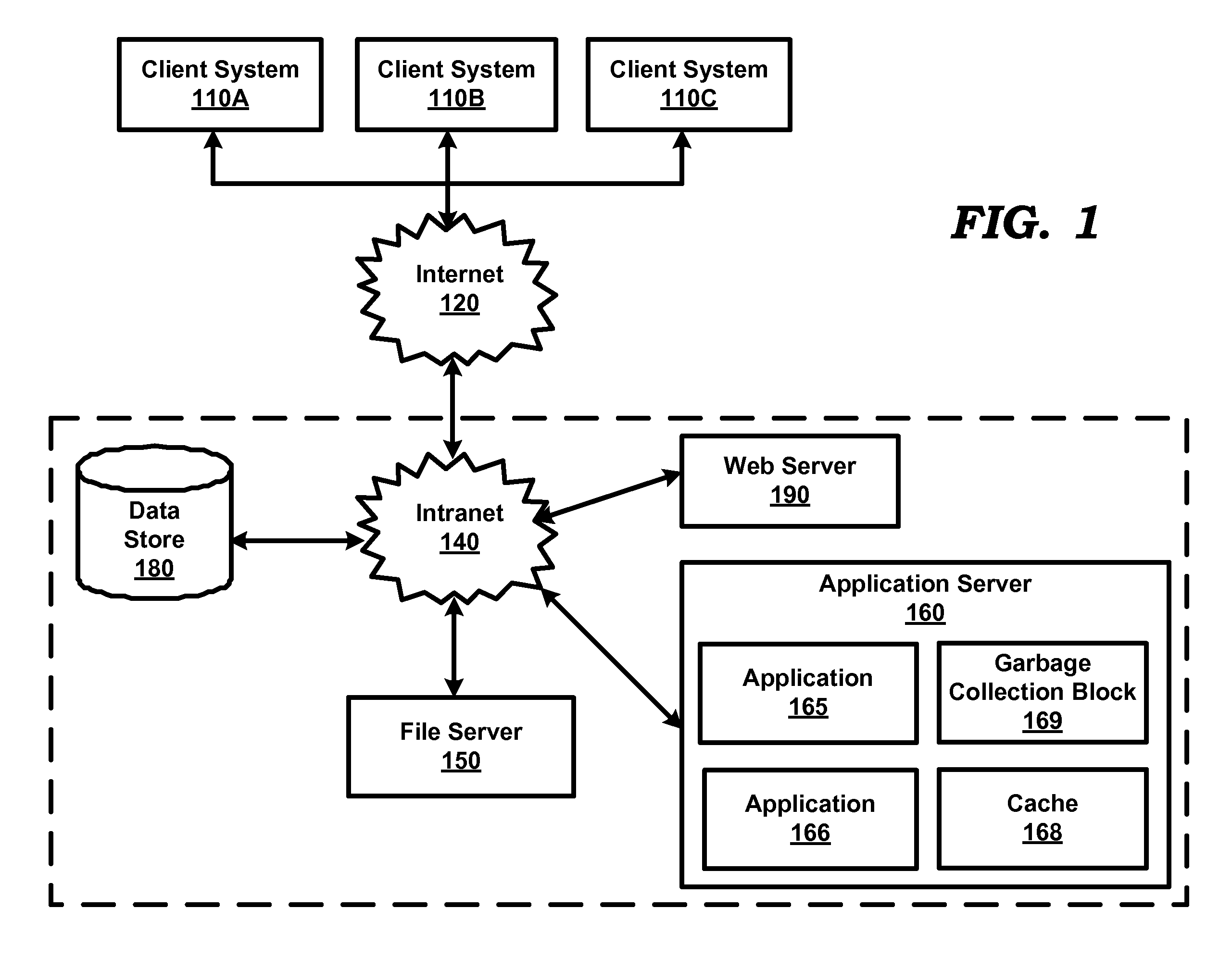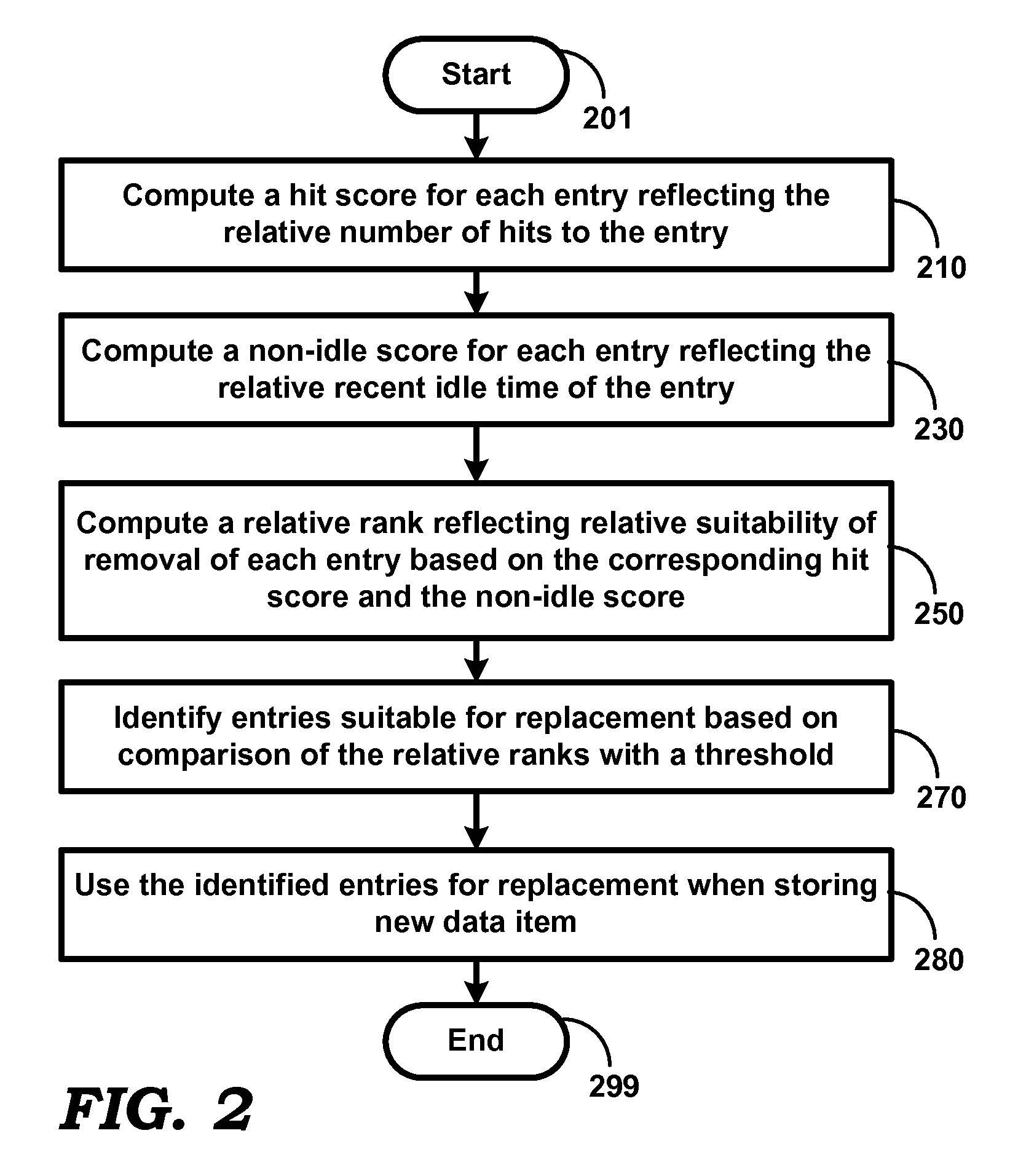Garbage collection in a cache with reduced complexity
a cache and garbage collection technology, applied in the field of caches, can solve the problems of computational/memory requirements) complexity, and achieve the effect of reducing computational and/or memory complexity and correspondingly higher computational complexity
- Summary
- Abstract
- Description
- Claims
- Application Information
AI Technical Summary
Benefits of technology
Problems solved by technology
Method used
Image
Examples
example implementation
4. Example Implementation
[0043]FIG. 3A illustrates the information (“activity information”) maintained by garbage collection block 169 for each cache item in an embodiment of the present invention. The table there is shown containing four columns 301-304 and five rows 322-326. Each row corresponds to an item in cache 168. Column 301 stores a cache entry identifier, column 302 stores the last accessed date, column 303 stores hit count of the entry, column 304 shows the expiration date of the entry.
[0044]Merely for ease of understanding, it is assumed that last accessed information is maintained as day / date, though in typical implementations, the access time may be logged at much finer (e.g., as seconds or sub-seconds) granularity. Furthermore, the hit count may be reset for all entries, for example, after each garbage collection operation or periodically otherwise. The status of table of FIG. 3A is assumed to be on August 31.
[0045]FIG. 3B shows the activity information shown in FIG. ...
PUM
 Login to View More
Login to View More Abstract
Description
Claims
Application Information
 Login to View More
Login to View More - R&D
- Intellectual Property
- Life Sciences
- Materials
- Tech Scout
- Unparalleled Data Quality
- Higher Quality Content
- 60% Fewer Hallucinations
Browse by: Latest US Patents, China's latest patents, Technical Efficacy Thesaurus, Application Domain, Technology Topic, Popular Technical Reports.
© 2025 PatSnap. All rights reserved.Legal|Privacy policy|Modern Slavery Act Transparency Statement|Sitemap|About US| Contact US: help@patsnap.com



